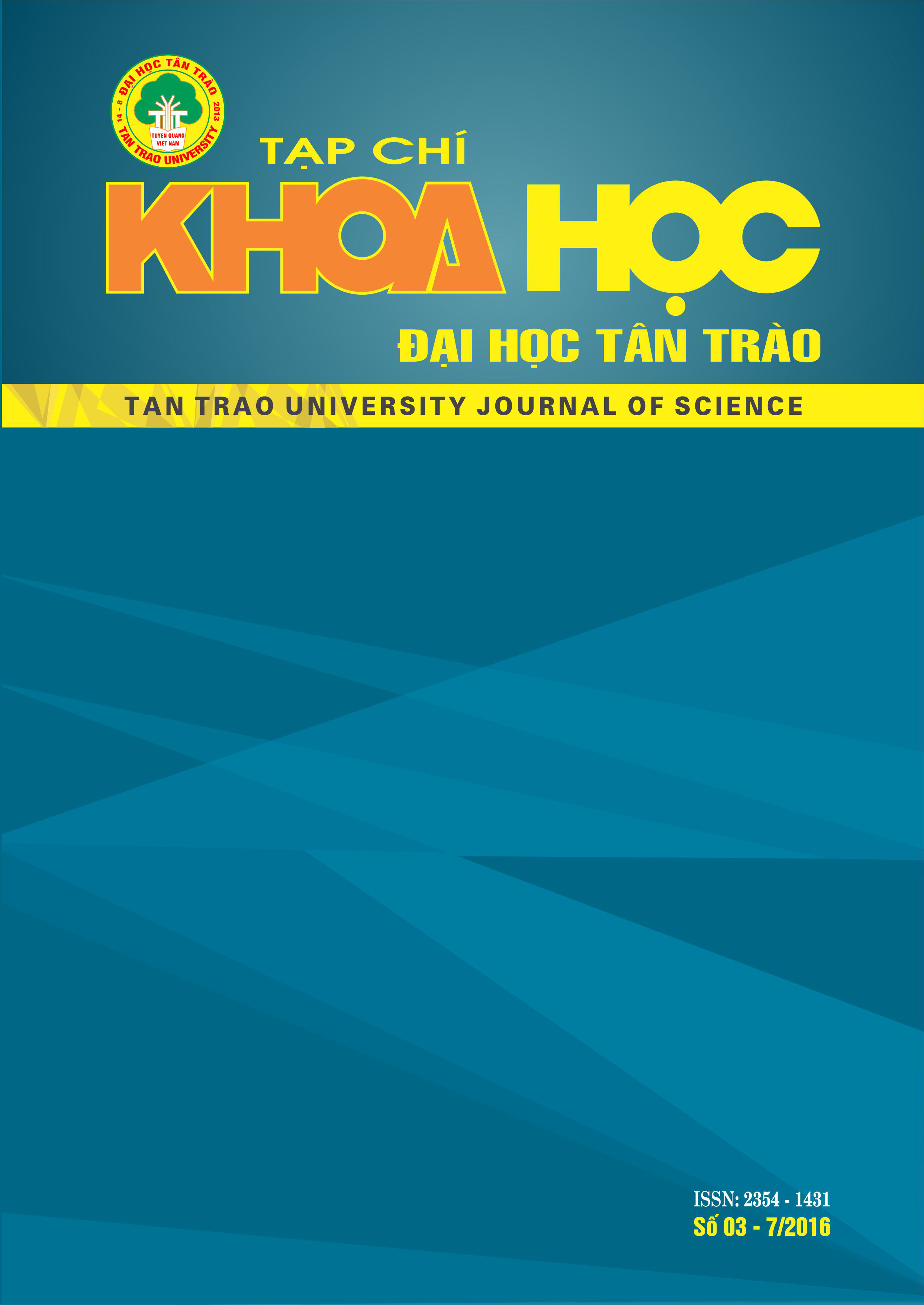Characterized of music in “Luon” Tay people
DOI:
https://doi.org/10.51453/2354-1431/2016/76Keywords:
Luon; lyrical song; culture; Tay peopleAbstract
In the treasure of literature and art of Tay people, love songs that were performed by boys and girls, were considered as a unique activity of folk culture. There are many definitions to name this kind of song. Depends on spatial the performing, activities forms which "Luon" called with many different names: Lượn slương, Lượn cọi, Lượn nàng hai, Lượn nài, Cọi or Ieu... Luon of the Tay people were created by many combination of musical elements. Whatever they are called, they are the most significant, impressive and expressive songs in the treasure of folk-songs of Tay people today.
Downloads
References
1. Dân ca Tày (1962), Bài Lượn cọi (A) (Bạch thông - Bắc Cạn), Nxb Âm nhạc, Hà Nội.
2. Dân ca Tày (1980), Bài Xót thương (Hà Quảng – Cao Bằng), Nxb Văn hóa, Hà Nội;
3. Dân ca Tày (2000), Bài Lượn nài (Văn Lãng - Lạng Sơn), Nxb Văn hóa dân tộc, Hà Nội;
4. Phạm Văn Đồng (2000), Trích phát biểu trong "Hội nghị Văn hóa thông tin vùng các dân tộc ít người" tháng 12 năm 1997, Tạp chí Văn hóa các dân tộc, (5);
5. Vi Hồng (1978), Sli Lượn dân ca trữ tình Tày - Nùng, Nxb Văn hoá dân tộc, Hà Nội;
6. Phạm Tú Hương (1997), Nhạc lý cơ bản, Nxb Nhạc viện Hà Nội;
7. Phạm Tú Hương (1999), Âm luyến láy trong dân ca người Việt, Tạp chí Văn hóa Nghệ thuật (5), tr.88;
8. Nhiều tác giả (1978), Mấy vấn đề về Then Việt bắc, Nxb Văn hóa dân tộc, Hà Nội;
9. Nông Thị Nhình (2000), Âm nhạc dân gian các dân tộc Tày – Nùng – Dao Lạng Sơn, Nxb Văn hóa dân tộc, Hà Nội;
10. Phạm Minh Phúc (1994), Tìm hiểu dân ca Việt Nam, Nxb Âm nhạc, Hà Nội;
11. Tú Ngọc (1974), Điệu thức trong dân ca người Việt, Tạp chí Văn hóa Nghệ thuật (4), tr.87 - 88;
12. Hoàng Tuấn (2000), Âm nhạc Tày, Nxb Âm nhạc, Hà Nội;
13. Nguyễn Thị Yên (2009), Tín ngưỡng dân gian Tày – Nùng, Nxb KHXH, Hà Nội;
14. Nguyễn Thị Yên (2006), Then Tày, Nxb KHXH, Hà Nội.
Downloads
Published
How to Cite
Issue
Section
License

This work is licensed under a Creative Commons Attribution-ShareAlike 4.0 International License.
All articles published in SJTTU are licensed under a Creative Commons Attribution-ShareAlike 4.0 International (CC BY-SA) license. This means anyone is free to copy, transform, or redistribute articles for any lawful purpose in any medium, provided they give appropriate attribution to the original author(s) and SJTTU, link to the license, indicate if changes were made, and redistribute any derivative work under the same license.
Copyright on articles is retained by the respective author(s), without restrictions. A non-exclusive license is granted to SJTTU to publish the article and identify itself as its original publisher, along with the commercial right to include the article in a hardcopy issue for sale to libraries and individuals.
Although the conditions of the CC BY-SA license don't apply to authors (as the copyright holder of your article, you have no restrictions on your rights), by submitting to SJTTU, authors recognize the rights of readers, and must grant any third party the right to use their article to the extent provided by the license.


